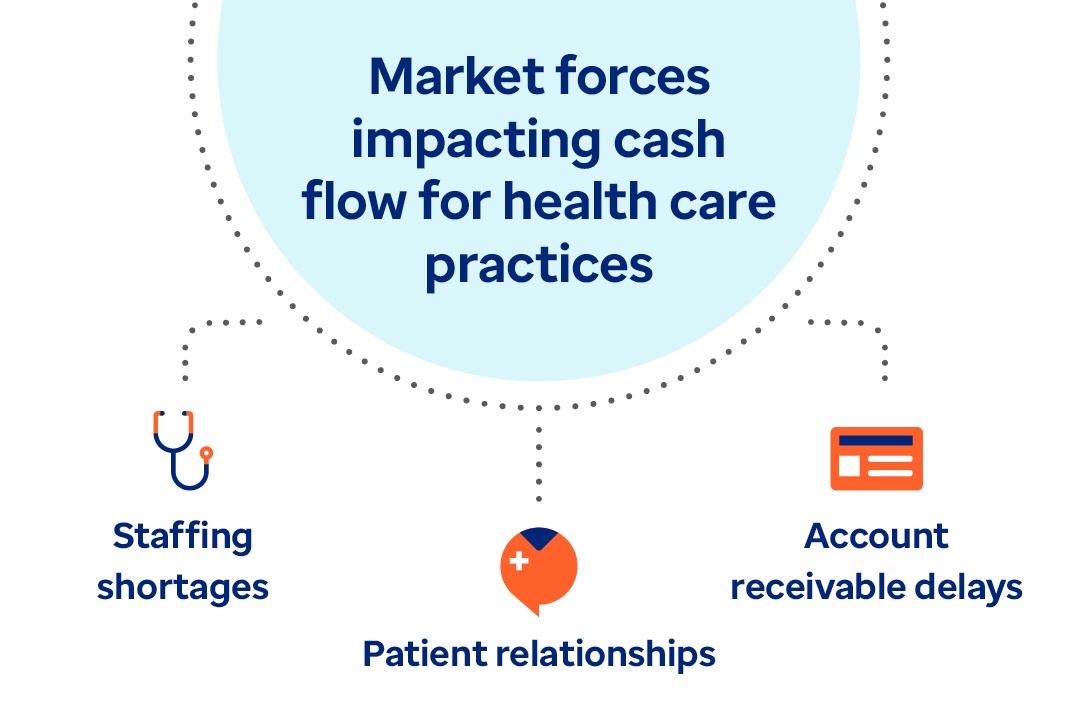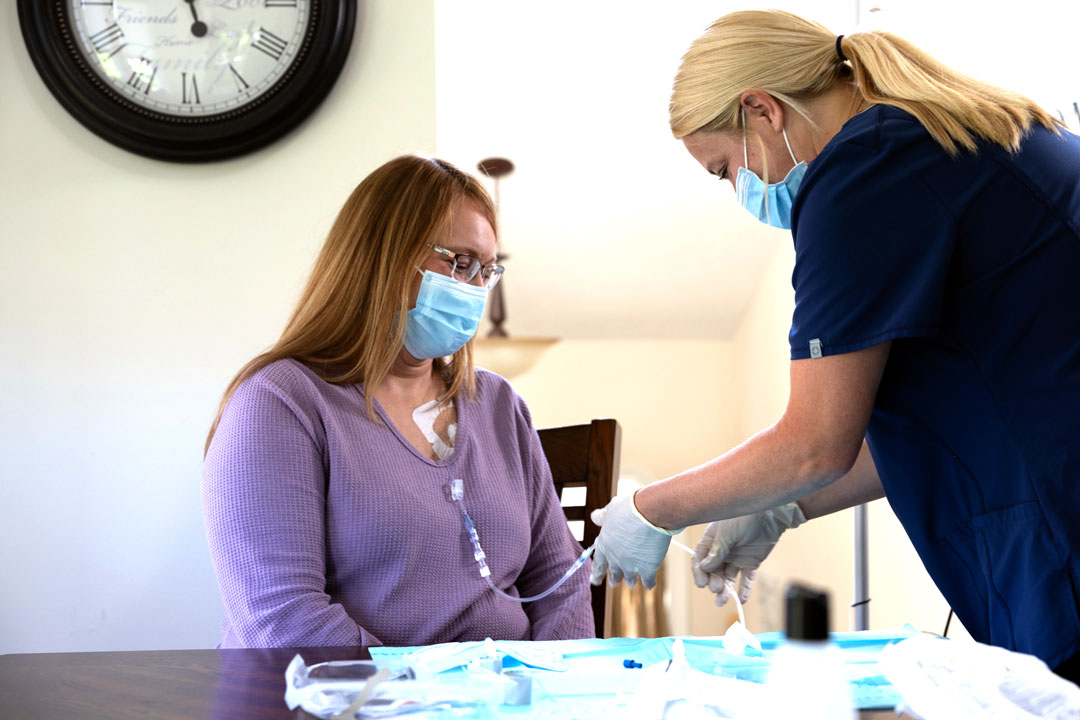Explore insights by category
Data and analytics | Finances and payments | Mental health | Patient and member engagement | Pharmacy care | Pharmacy management | Technology and automation | Value-based care | View all
Latest featured insights
Create meaningful change for the women in your workforce. Learn steps to help close the gap in health equity, improve health and lower costs.
E-book
Explore the dramatic changes in the years since 2000 — in drug performance and design, and especially affordability.
Article
Explore how evidence-based tools like The ASAM Criteria® Navigator and InterQual® Substance Use Disorders Criteria are helping payers and providers efficiently and effectively navigate the complex substance use disorder landscape today.
On-demand webinar
Learn how to help transform hospital revenue cycle operations with healthcare automation.
Data and analytics
Article
Understand how routine clinical practice impacts information captured in real-world data (RWD).
On-demand webinar
Hear from experts in this Endpoints News webinar on the increasing importance of clinicogenomic data, including diverse phenotypic and genotypic profiles.
Video
Optum Life Sciences leaders break down common missteps when using RWD and how to create practical strategies to overcome them. Watch the video from STAT Summit.
Article
Providers collect data about patients every day. But what should they be considering — and doing — to put their clinical data to good use?
Finances and payments
Article
Discover 4 ways health plans can save money today — and in the future — by engaging with a digital claim payment partner.
Article
Learn how AI is changing the fraud case review process.
Article
The connection between money and health runs deeper than just costs — your employees rely on your benefits strategy for overall wellness.
Article
Learn how payment delivery optimization can improve the healthcare financial cycle and bridge the gap between payers and providers.
Mental health
Article
The collision of chronic conditions and behavioral health challenges can’t always be stopped, but healthcare leaders can work to mitigate its impact.
Article
Learn more about the current research on mobile crisis teams (MCTs), how to build an MCT as well as envision a future for them.
Article
See how employee mental health benefits are evolving to support workforce wellbeing.
Case study
Learn how we support the unique workplace needs of content moderators with a tailored wellbeing strategy.
Patient and member engagement
Article
Learn how Optum Serve is helping to advance the health and well-being of Veterans and spouses in the trucking and cybersecurity workforce.
Guide
Learn how Optum Serve helped Veterans achieve health and wellness goals, promoted well-being, prevented illness and reduced the burden of chronic conditions.
White paper
Learn how Optum Serve supports Veterans through a whole-health approach to work and life.
Guide
HEALS is a data analytics solution that highlights where and how inequities occur within a community, state or a health plan’s member population.
Pharmacy care
Article
Learn how a holistic model enhances multiple sclerosis care.
Article
Optum tackles the many issues infusion pharmacy care faces as it serves vulnerable patients with acute needs and complex conditions.
Video
Optum Specialty Pharmacy leverages specialized expertise and resources with flexibility, delivering personalized care that drives better outcomes.
White paper
Learn about the impact on catheter lock therapy for home infusion patients with a central venous access device (CVAD).
Pharmacy management
Article
From predicting drug trend to earlier fraud protection, see how we’re leveraging AI to improve operations for clients and members.
Report
First self-administered Alzheimer's therapy shifts costs to pharmacy plans, plus first treatments for MS and bronchiectasis.
Article
We know about the high prices for new drugs, but drug companies make most of their money from repeated small price increases on older drugs.
Article
In this conversation, get a peek into upcoming solutions and technologies designed to address high-cost medications.
Technology and automations
Case study
Using digital integration to ease administrative burdens can help you spend more time with patients and deliver positive patient outcomes.
White paper
Read the white paper for strategies on controlling fixed costs, efficiency and organizational flexibility.
Case study
See how Lima Memorial improved efficiency with advanced technology.
On-demand webinar
Watch the webinar to learn actionable strategies on tackling decreased hospital margins, increased labor costs and staffing shortages.
Value-based care
Article
New cancer treatments can transform patients’ lives — but they also create costs that demand a new kind of cancer guidance program.
Article
To ensure that well-being benefits drive results, employers must let go of strategies built around one-and-done health tasks. Here’s how.
E-book
Discover 5 areas of focus for payers and employers looking to improve women’s health outcomes, costs and member satisfaction.
Article
Learn how health plans can fill care gaps by offering greater support and personalized solutions for women experiencing menopause.
All healthcare industry insights (618)
Filter
-

New drugs for Alzheimer’s multiple sclerosis, more
First self-administered Alzheimer's therapy shifts costs to pharmacy plans, plus first treatments for MS and bronchiectasis.
-

A proven path to stable, reliable, scalable modernization
Learn how a more than 10-year collaboration led to a seamless enrollment experience in 2025 for millions of consumers in Medicaid and QHP plans.
-

How AI is powering new pharmacy innovations
From predicting drug trend to earlier fraud protection, see how we’re leveraging AI to improve operations for clients and members.
-

Quality innovation: A member-first approach
Learn how Optum uses a member-first digital approach, advanced analytics and AI to enhance quality for clients and health plan members.
-

Trends shaping the future of clearinghouses
Discover 5 key trends that can help healthcare organizations streamline processes, minimize errors and deliver faster, more reliable services.
-

The impact of AI on today's pharmacy benefits
In our latest podcast, two AI experts discuss how Optum Rx is leveraging artificial intelligence while prioritizing privacy and security.
-

Regulations to watch: Summer 2025
As legislation impacting PBMs ramps up again at the state level, the Trump administration signs drug pricing executive order in Washington, D.C.
-

Opportunities in the DSNP market: Essential insights for MA leaders
Join speakers Cori Leech and Jared Landis as they discuss how to meet the challenges facing health plans in the D-SNP market right now.
-

What to expect from pharmaceutical tariffs
New tariffs on imported drugs are expected soon, which could mean higher prices and potential shortages.
-

How do pharmacy benefit managers work?
Hear how PBMs negotiate to deliver the lowest possible cost, benefiting plan sponsors and members alike.
-

Better drugs? Maybe. Higher cost? Definitely.
New drugs for myasthenia gravis and hereditary angioedema will be easier to take, more effective, and add competition.
-

How Medicare Advantage leaders can thrive in the D-SNP market
We discuss the growth potential and the imperative for integrated care coordination and enhanced benefits for the dual-eligible population.
-

A systemic transformation is needed to fix clinician burnout
One Optum expert explains how value-based care offers a way to address the clinician burnout crises.
-
Better outcomes with value-based care versus fee-for-service Medicare
A first-of-its-kind evidence-based study indicates the positive impacts of value-driven reimbursement and care delivery on patient outcomes.
-

Getting back to the joy of clinical practice through value-based care
Daniel Frank, MD, experienced firsthand the frustrations of not being able to dedicate enough time to patients.
-

Marrying clinical results and financial stability in value-based care
In this Q&A with an Optum expert, get some key insights about the clinical and financial impacts of value-based care.
-

Injecting humanity back into patient care
Hear firsthand how the help of extended team clinicians can offer patients better care.
-

How value-based care helps physicians work at the top of their license
Learn about the value-based care strategies changing the definition of productivity.
-

Prioritizing social determinants of health is a must in value-based care
How one practicing physician learned that addressing the social and economic challenges of patients was crucial.
-

Can larger systems change how they provide care?
One expert explains that even larger organizations can make a successful leap to value-based care.
-

One doctor’s journey as an Optum provider
Dr. Benito Calderon, a provider in Nevada, explains how working within the Optum Network transformed his practice.
-

Three tips to help providers transition to value-based care
Some quick insights on how to make a VBC model work for your organization.
-

How Optum supported one practice in its transition to value-based care
Dr. James Corcoran shares his experience as a member of the Optum Network in Arizona, focusing on how the organization supported his practice’s transition to value-based care.
-

Dr. Tony Alamo on the strategic advantages of value-based care
An Optum expert shares his perspective on the advantages of value-based care for healthcare providers looking to achieve both clinical excellence and financial sustainability.


![A Quarter-Century of Pharmacy Benefit Changes [E-Book]](/content/dam/optum-dam/images/business/pharmacy/hand-with-vial-1080x720.jpg)

![Automation Strategies for Empowering Staff and Patients [Webinar]](/content/dam/o4-dam/images/professionals/company-meeting-1080x720.jpg)


















![Quick and Safe Digital Specialty Pharmacy Service [Video]](/content/dam/optum-dam/resources/videos/business/digital-pharmacy-video/digital-pharmacy-video-1080x720.jpg)









![Women’s Health is Far More than Reproductive Care [E-book]](/content/dam/optum-dam/images/business/insights/group-of-diverse-women-walking-together-smiling-1080x720.jpg)

